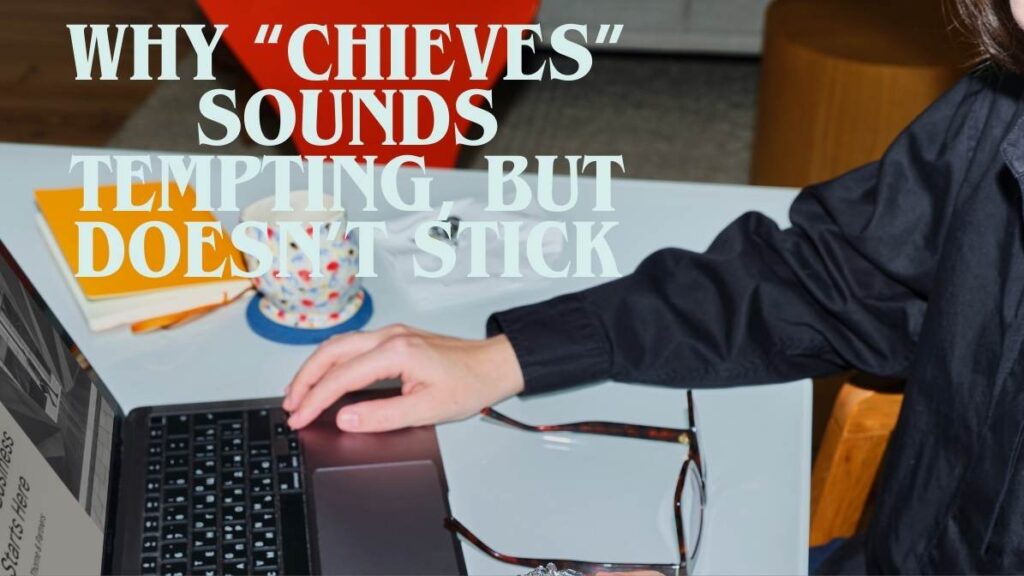Let’s jump right in: the plural of chief is chiefs, not chieves. That’s the straightforward answer. But to really understand why and to help you feel confident using it I’ll walk you through grammar rules, word origin, common confusions, and plenty of real‑life examples.
Word Origin and Etymology of English Words
Tracing the etymology of English words, chief comes from Old French cheef (head, leader), which in turn comes from Latin caput (head). So at its core, chief is a leader, a real or figurative head of something.
Understanding English word roots shows us why the plural stays regular: chief has no weird plural pattern built into its ancestry. It’s a noun that happily takes a simple “‑s” to become plural. So “chiefs” is the correct chief plural form.
Grammar Rules – How to Pluralize Nouns
You might wonder: how do we generally form the plural form of chief? In English, most nouns form plurals by adding ‑s or ‑es. These are the typical patterns in English pluralization patterns.
Words ending in ‑f or ‑fe often change to ‑ves (like knife → knives), but not always. Chief ends in “‑f” but breaks that pattern. It’s a prime example of irregular plural forms that by historical usage resist the word endings with ‑f and pluralization rule that yields ‑ves. This is why chief grammar rule for pluralization goes: just add ‑s making it chiefs.
Grammar Tip: Don’t Let “‑f” Fool You
A handy grammar tip: not every noun ending in “‑f” needs to convert to ‑ves. Words like roof, belief, chef, and our word chief keep the “‑s” plural.
Chief vs Chiefs: Singular vs Plural
- Chief refers to one leader, executive officer, or head of a tribe, council, community, organization, or conference.
- Chiefs refers to multiple such leaders or officers.
These fall under Plural nouns in English, and this distinction between singular and plural comes into play in varied contexts.
Scenario Example – Email in a Tribal Council Context
Subject: Confirmation of Attendance at Tribal Council Meeting
Hi Chief Mara,
I hope you’re well. I wanted to check in and confirm whether the chief plural form we discussed for the upcoming meeting is chiefs or chieves. As a reminder, in the grammar rules of English, the correct plural of chief is chiefs.
We’ll be meeting with the other chiefs of our tribe on Friday at 10 a.m. in the community hall. Please let me know if you’d like me to circulate the agenda in advance.
Warm regards,
Daniel Ortiz
Council Secretary
Here you see chiefs used correctly. If someone wrote chieves, they’d be falling for a common grammar confusion, thinking “‑f” means “‑ves.” But as we’ve seen, chief bucks that pattern.
Examples Across Contexts
Let’s illustrate with more noun examples in sentences, spanning different domains:
- Military / Police / Executive Officer
- The chief of police addressed the press.
- Meanwhile, three chiefs of different departments collaborated on a community safety plan.
- Corporate / Organization / Conference
- The executive officer—our chief financial officer—is out today.
- We invited the chiefs of marketing, sales, and operations to the conference.
- Tribe / Council / Community
- Chief Amina will speak at the council meeting.
- We expect several chiefs from each community to join the conference.
Each time, the plural chiefs fits smoothly. You avoid awkwardness, ensure clarity, and follow the English pluralization patterns.
Grammar Mistakes to Avoid
Even skilled writers sometimes stumble on chief vs chiefs. Let’s highlight grammar mistakes to avoid:
- Incorrect: I met with the chieves of the organization.
Why it’s wrong: “Chieves” isn’t an accepted plural. It stems from misapplying word endings with ‑f and pluralization rules. - Incorrect: The chiefs is here.
Why it’s wrong: That’s a subject–verb disagreement. Since chiefs is plural, use are: The chiefs are here.
Stick with “chiefs.” Trust chief grammar rule: keep it simple.
Additional Contexts & Specialized Usage
Within Business and Professional Settings
In workplaces, you might read:
At the annual conference, the chiefs from various organizations gathered to discuss leadership strategy.
Here chiefs clearly refers to multiple executive officers.
In Fiction or Storytelling
Consider:
In the novel, Chief Brandon of the mountain tribe had a dream that the chiefs of neighbors would unite.
That’s a blend: one singular chief, then multiple.
Describing a Role
When teaching grammar:
The plural form of chief is chiefs. It’s a regular plural, despite the “‑f” ending, making it a useful noun example in sentences when demonstrating irregular plural forms that defy expectations.
Synonyms for Chief and Related Terminology
Sometimes you still prefer variety. Here are some synonyms for chief:
- Leader
- Head
- Commander
- Director
- Principal
- Boss
- Captain (in some contexts)
Each carries nuance—maybe you’re writing about an executive officer or a tribal chief. Still, the plural patterns remain normal: leaders, heads, commanders, etc.
Common Grammar Confusion and How to Overcome It
Let’s address five persistent confusions readers might have:
| Mistake | Why It Happens | Fix |
|---|---|---|
| Using chieves | Overgeneralizing “‑f → ‑ves” rule | Remember exceptions: chief → chiefs |
| Mixing subject–verb agreement | Chiefs is vs chiefs are | Use are with plural nouns |
| Pluralizing “chief” in compound nouns incorrectly | e.g., chief of staffes | Keep only the head noun in plural: chiefs of staff (but often “chiefs of staff” stays singular if roles are unique) |
| Capitalization inconsistency | mixing Chiefs and chiefs randomly | Capitalize when it’s a title before name: Chief Mara; otherwise lowercase |
| Confusion with “plural of chief” when teaching grammar vs regular usage | Might overthink | Just trust: chiefs is the plural |
A little focus on Grammar tips can smooth writing.
Why “Chieves” Sounds Tempting, but Doesn’t Stick

“Chieves” seems plausible. After all, we often turn “‑f” into “‑ves.” But the word origin of chief doesn’t support that change. The plural pattern for many borrowed or historically rooted nouns stays stable.
English can frustrate learners. Yet understanding the etymology of English words helps settle the doubt. Chief’s history keeps its plural regular. So fight the urge write chiefs.
More Real‑World Scenarios
Email in a Business Organization
Subject: List of Chiefs Attending the Leadership Retreat
Hello Chief Patel,
Quick heads‑up: I’m compiling a list of chiefs who’ll attend our quarterly leadership conference.
Could you confirm whether the chief plural you represent is attending? We’ve got Chief Navarro and Chief Zhou already on the roster.
Thanks,
Alison Reed
HR Coordinator
Again: chiefs is used properly in context.
Memo in a Police Department
To: All Department Chiefs
From: Deputy Director Ramirez
Subject: Joint Briefing this Friday
Good afternoon,
Please be reminded: the chiefs of Patrol, Investigations, and Traffic branches will converge for a joint briefing this Friday.
The chief grammar rule: plural of chief is chiefs—and trust me, that’s what you’ll use when you refer to multiple department heads.
See you then,
Ramirez
A little humor, a clear tip, and correct usage.
Final Wrap‑Up
Let’s circle back. The ultimate plural of chief is chiefs—no quirky “chieves” needed. This follows regular English pluralization patterns, regardless of the “‑f” ending. It stands firm in usage across contexts—whether you’re writing an email to a Chief, addressing chiefs in a tribe, or talking about executive officers at a conference.









